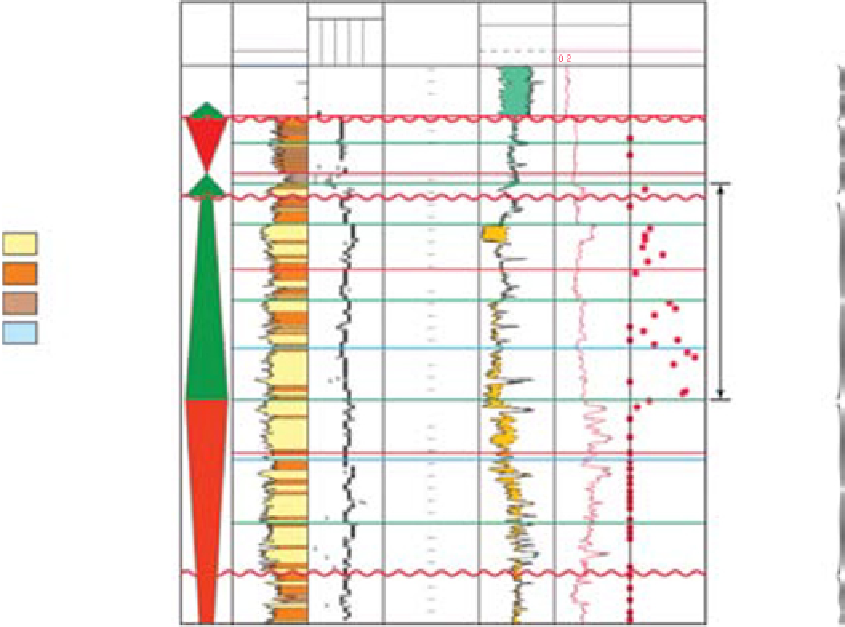Geoscience Reference
In-Depth Information
22/30c-13
Long
Te rm
Strat.
Cycle
Grain size
RHOB
AT 60
Metres
MD
PHI-Spicule
(%)
1.95
2.95
0.2
2000
GR
NPHI
AT90
0
100
0.45
-0.15
Heather Shale
6300
Franklin C Sands
FACIES CODE
Upper shoreface
Secondary
Porosity from
dissolved
Spicules
Middle shoreface
Lower shoreface
Tr ansition zone
6350
Franklin
Upper B Sands
6400
Franklin
Lower B Sands
6450
Franklin A Sands
Fig. 24.
Secondary porosity development related to sponge spicule dissolution in the upper part of the Franklin B Sands.
GR: Gamma Ray Log; MD: Measured Depth (m); RHOB: Bulk Density; NPHI: Neutron Porosity; AT60: Medium Resistivity;
AT90: Deep Resistivity; PHI-Spicule: petrographically estimated core secondary porosity related to spicule dissolution.
Elgin Well 22/30c-13: Franklin B Sands Phi-K Cross-plot
35
30
“Upper B Sands”
Spicule porosity
(porosity increased
but not permeability)
25
20
Upper B Sands
Lower B Sands
Log. (Up B Sands)
Log. (Lw B Sands)
15
“Lower B Sands”
No spicule porosity
10
Fig. 25.
Comparison of porosity-
permeability relationships for the
progradational Lower B Sands vs. the
retrogradational Upper B Sands (of
Fig. 17) where secondary porosity
related to sponge spicule dissolution
is developed.
5
0
0.001
0.01
0.1
1
Kh (mD)
10
100
1000
10000
Fulmar deposits display an increased marine
dinocyst component and relatively more abun-
dant saccate pollen. This could be attributed to
the more condensed character of the retrograda-
tional succession.
DISCUSSION
Key findings of this study challenge a number of
concepts concerning stratigraphy and sedimen-
tation in the Central Graben, most notably:







Search WWH ::

Custom Search